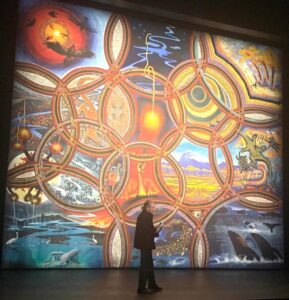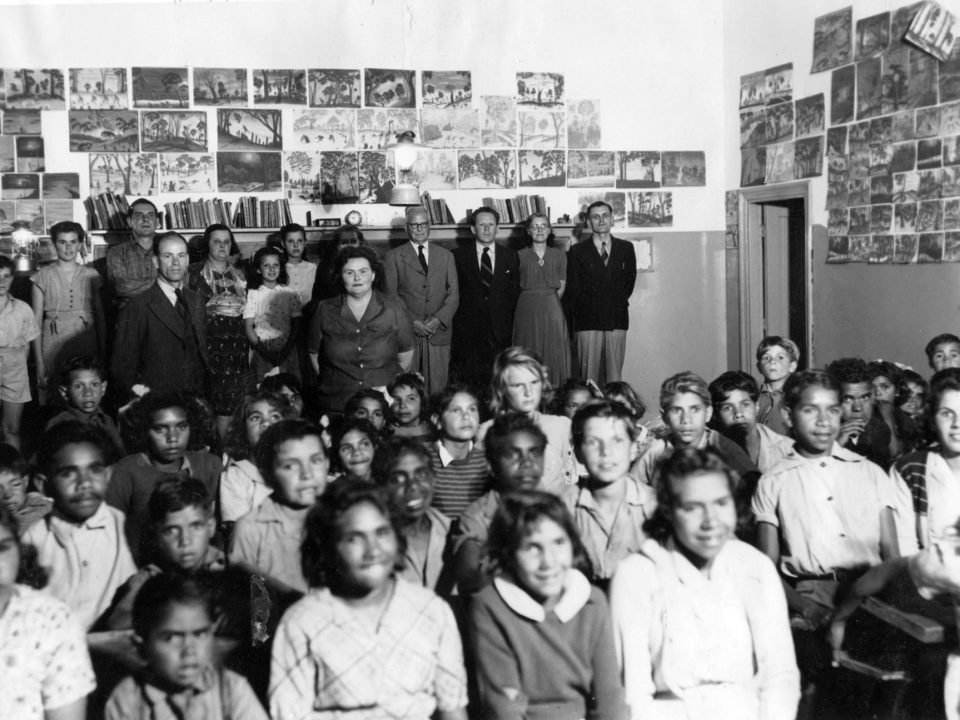I’ve just talked to my colleague John Stanton on the phone, just as he was heading off south to Kojonup. He will be giving talks there and in Albany in the next days. I should have been travelling with him, but I’ve been laid low for the past nine days with a really nasty cold. Funny enough, John had a similar cold when we were in Albany two years ago at this time of the year, and he passed it on to me on the way back to Perth. We were both laid low for ten days or more.
Anyway, John came around yesterday and we went through my talk which he will now give in addition to his own talk at The Kodja Place in Kojonup, 15.45, Friday, 28 November. We were both wearing masks to help make sure that I didn’t pass on my ‘lurgy’
In his talk, John will describe his association with this magical story over the past 40 years, including his trip to Colgate University in the US with Ezzard Flowers and Athol Farmer to view Mrs Rutter’s ‘missing’ collection of Carrolup artworks. Whilst there, the three men arranged with members of Colgate for twenty of the most outstanding pieces to return to Noongar boodja for the Koorah Coolingah: Children Long Ago exhibition in Katanning in 2006.
After his own talk, John will give my presentation, The Carrolup Legacy: Facilitating Connection, Healing, and Resilience. After relating key elements of the story, he will briefly describe how our current greater understanding of trauma and the healing of trauma provides important insights into how Noel White connected with the Aboriginal children of Carrolup and help release their creative talents. He will emphasise how this Story speaks to today. The talks will be followed by a general discussion. Here is what we wrote for the Invite:
‘David and John have developed The Carrolup Project, which includes the Storytelling, Education and Healing online resource The Carrolup Story (www.carrolup.info), to celebrate the achievements of the Carrolup child artists and facilitate the development of grassroots-based, community healing initiatives. They were invited to talk here by community member Lisa-Martello Hart, to facilitate our development of a community-driven project that uses our local history, community members and the knowledge of world-leading experts, to help enhance the wellbeing of our youngsters and the wider community.’
John will then travel down to Albany where he will give both presentations at A Carrolup Briefing, to an audience at Albany Town Hall at 15.00, 30 October.

Harley Coyne pictured with the Ngallak Koort Boodja canvas, or “Our Heartland”, 8m tall x 10m wide canvas painted by six leading Noongar artists, 2006.
On the following day at 9.00, he will visit Ngallak Koort Boodja, “Our Heartland”, at the Albany Entertainment Centre (AEC) with members of the local community. This is one of Australia’s biggest Aboriginal canvas paintings, standing 8m tall and 10m wide. Six leading Noongar artists were commissioned by the Perth International Arts Festival to develop a creative symbol of Noongar connection to country. It took three years to complete and was unveiled at the festival opening at Kings Park, Perth, in 2006. After being exhibited in Winthrop Hall at the University of Western Australia, the principal sponsor of the Festival, it was brought to Albany in 2011 as part of the Great Southern Program. It is stored up in the fly tower of the AEC because it is too large to fit anywhere else.
At 10.00 the same day, John will attend The Legacy of Carrolup and Noongar Art, which takes place at Albany Town Hall. This event will involve talks by John and the following: Annette Davis, artist and curator of the Bella Kelly painting exhibitions; Bob Symons, President ACE Camera Club; Malcolm Traill, Historian; Tony Davis, author of White Sails and Charcoal: Stories of Coincidence, Bella Kelly and Carrolup, which is a portrait of the social history of Southern Western Australia, through the evolution of Noongar art and the influences of European Settlement.
I’m certainly missing a great few days. My thanks to Lisa Martello-Hart, Trevor Garland, Annette Davis, Donna Cameron and the others who put these events together. And to John, of course, for becoming David Clark for a little while (giving my talks). Poor devil!


